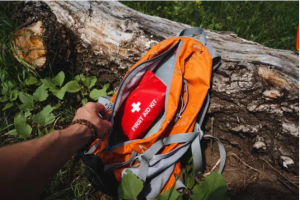All organizations deal with risk on an everyday basis. From managing risk on the business side of things, where they evaluate the risk of bringing a new product to market, to the physical or mental risk, health, and safety in the work done.
In this content piece, we will look at what organizations do to focus on the latter and their management practices in ensuring the safety of their workers.
What is Risk Management?
Risk management refers to strategizing and planning for potential accidents, or simply having contingency plans for the ‘risks’ any work carries. At a construction site, the risks are of falling from heights, health issues during work, potential exposure to hazardous materials, etc.
Organizations employing workers to carry out their tasks despite these risks have to take precautionary measures and plan for these situations. That refers to risk management.
What Kind of Risk Management Is Conducted in Health and Safety?
Health and safety practices do not follow the same rules of risk management as they are in business risk. Organizations cannot take a gamble on whether or not a situation will be safe or not. They always have to go in assuming the worst and be prepared for anything that might happen.
From protecting the worker to protecting the company’s assets, every organization has to observe risk controls and management. Following safety rules is always a benefit, and is part of the tasks being conducted as a whole, rather than an extension of it.
A few of these risk management strategies are mentioned below.
Focusing on a ‘Caution-First’ Approach
If a business has to launch a new product, they actively take a risk in doing so. That risk is mitigated through conducting market research and reaching as close an idea as possible to determining the type of product, quantity, quality, etc.
In health and safety, the approach is very different. Organizations absolutely cannot take any risks, at least, take any gamble within that risk without ensuring that no harm will come to the worker. Accidents happen, but organizations are legally obligated to assume the worst, that everything that can go wrong will go wrong.
That also means organizations have to account for safety issues and risks for things with a very low probability of them happening. It can make this approach difficult, lengthy, and hectic processes to follow, but it is always worth it as upholding safety seems insignificant right until an accident occurs.
The following Legislation as it Develops
Sometimes safety rules are made after an accident occurs for which there was previously no legislation. Organizations need to take into account that laws are always being developed, and changing, and need to keep up with these things when developing their risk controls.
Of course, employers are given a set amount of time as a grace period even after a law is passed. However, organizations need to still be somewhat dynamic with how they handle change, and not have rigid systems that are incompatible with these kinds of systematic changes.
Dynamic Risk Assessments and Risk Controls
When an organization puts a risk control in place to manage any given potential accident, they often have to conduct risk assessments beforehand and base their contingency on that assessment.
However, sometimes problems just arise without being able to know about them. For example, if workers are on a construction site, working high up on a scaffolding, if every safety measure is accounted for then the work is as safe as it could be. However, a sudden gust of wind, storm, or earthquake can create a dangerous situation for those workers.
Dynamic risk assessments are a vital part of managing risk because they allow managers, supervisors, and even workers to effectively understand how to conduct a risk assessment on the fly. It helps them implement risk controls without a long and arduous process.
Understanding Safety Rules vs Safety Practice
Safety is a difficult thing to achieve, and even then, it is not a one-and-done process. Both employees and employers have to take full responsibility for both their individual and collective rules for implementing and upholding safety.
However, following safety procedures is not the same as a safety practice. Dynamic risk assessments, for example, should almost be a universal necessity to ensure minimal risk as much as possible.
Training for Conducting Risk Assessments
The most effective risk management strategy, however, is to make sure that every employee is aware of the processes and receives proper risk assessment training. Employers can conduct online and offline sessions for ensuring workplace safety through continuous risk management and responsible safety practices.
Conclusion
Managers and employers manage risk all the time, whether in safety or business. In safety, though, managing risk is far less of a gamble and more of a necessity to reduce it as much as reasonably possible. Here, we have discussed how organizations make that happen.




